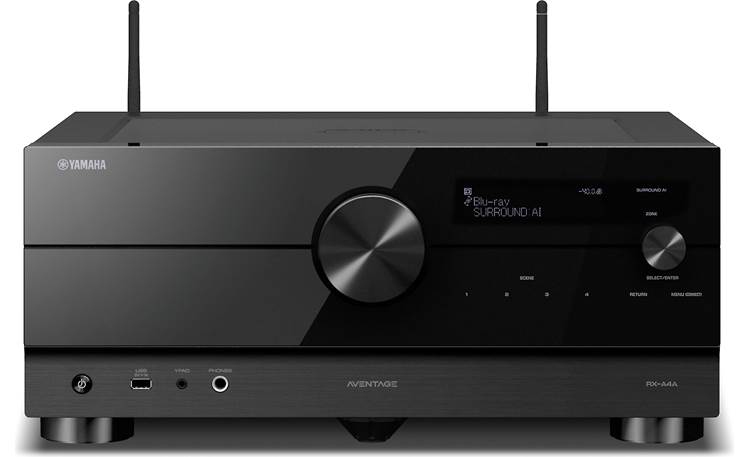There are many factors to consider when choosing an audio/video receiver (AVR), such as features, performance, and price. Denon and Yamaha are two of the most popular brands on the market, so it’s no surprise that their top-of-the-line models, the AVR-X3600H and RX-A1080, are often compared. Both receivers offer a wealth of features for enjoying movies and music, but which one is the better choice?
The Denon AVR-X3600H and Yamaha RX-A1080 are two of the most popular AV receivers on the market. Both offers features that appeal to a wide range of users, but which one is the best? In terms of power, the Denon AVR-X3600H is the clear winner.
It offers 9 channels of amplification, compared to 7 for the Yamaha RX-A1080. This extra power can be useful if you have a particularly large or demanding home theater setup. The Denon AVR-X3600H also has more advanced features than the Yamaha RX-A1080.
For example, it includes Dolby Atmos and DTS:X support, as well as IMAX Enhanced certification. If you’re looking for the latest and greatest in-home theater technology, then the Denon AVR-X3600H is the receiver for you. Finally, the Denon AVR-X3600H has a slightly lower price tag than the Yamaha RX-A1080.
While both receivers are certainly not cheap, the Denon model may be more affordable for some budgets. So, which receiver should you choose? If you’re looking for raw power and cutting-edge features, then go with the Denon AVR-X3600H.
If you’re looking to save a little money, then go with Yamaha’s offering.
TEST: AV-Receiver Yamaha RX-A1080 mit Surround AI
Denon Avr X3700H Vs Yamaha Rx A1080
The Denon AVR-X3700H and Yamaha RX-A1080 are both great receivers for your home theater. They both have 9 channels and can decode Dolby Atmos and DTS:X. They also have 4K/60p video support with HDR10, HLG, and Dolby Vision.
So, which one should you choose? Here are some key differences: Denon AVR-X3700H
-has more powerful amplification with 140 watts per channel vs 95 watts per channel on the Yamaha receiver -the Denon receiver has 11.2 channels vs 7.2 channels on the Yamaha which means you can add additional speakers for a more immersive experience -the Denon receiver has 8 HDMI inputs vs 6 on the Yamaha
Yamaha RX-A1080 -includes MusicCast Surround capability for wireless rear surround speakers
Denon Avr X3600H Review
The Denon AVR-X3600H is a 9.2-channel AV receiver with Dolby Atmos, DTS:X and IMAX Enhanced support. It’s also the first model in the company’s range to feature HDMI 2.1 connectivity, with eARC (enhanced audio return channel) and ALLM (auto low latency mode).
Power output is quoted as 105W per channel into 8ohms, 20Hz-20kHz, with two channels driven.
The X3600H has 11 power amps on board in total – seven for the main channels, plus four for Atmos/DTS:X height or surround back speakers. bi-amping of the front left and right speakers is also possible.
There are eight HDMI inputs (including one on the front panel) and three outputs – two HDMI outs and a monitor out with composite video conversion.
All three HDMI outputs are full bandwith 2.1 compliant, supporting 4K/60p HDR 10+ and Dolby Vision signals at up to 12bit 4:2:2 chroma subsampling, as well as BT2020 pass through.
Denon Avr-X3600H
The Denon AVR-X3600H is a 9.2 channel AV Receiver with 125W per channel. It supports Dolby Atmos, DTS:X and DTS Virtual:X for an immersive 3D audio experience. The receiver also features eight HDMI inputs, three HDMI outputs, Wi-Fi and Bluetooth connectivity, and Apple AirPlay 2 support.
Additionally, it has built-in Amazon Alexa voice control for hands-free operation.
Yamaha Receivers
Yamaha receivers are some of the most popular on the market, and for good reason. They offer great sound quality, a wide variety of features, and are very user-friendly. Here is a closer look at what Yamaha receivers have to offer:
Features:
Yamaha receivers come packed with features that allow you to get the most out of your audio experience. Some of the feature highlights include:
Multi-room audio: Many Yamaha receivers now come with built-in support for multi-room audio, so you can easily listen to music in different rooms of your home. This is perfect for entertaining or just filling your home with music.
Support for high-resolution audio: If you have high-resolution audio files, Yamaha receivers can handle them without issue.
This allows you to enjoy superior sound quality from your music collection.
4K video pass-through: The latest Yamaha receivers also support 4K video pass-through, so you can enjoy ultra HD content from your favorite sources.
User friendliness: In addition to being packed with features, Yamaha receivers are also designed for easy use.
The onscreen menu is intuitive and easy to navigate, and setup is a breeze thanks to the included Setup Wizard guide.

Credit: www.crutchfield.com
What are the Main Differences between Denon Avr-X3600H And Yamaha Rx-A1080
There are a few key differences between the Denon AVR-X3600H and Yamaha RX-A1080 that are worth noting. For starters, the Denon AVR-X3600H has slightly more watts per channel at 125 watts compared to the Yamaha RX-A1080’s 115 watts. Additionally, the Denon AVR-X3600H supports Dolby Atmos and DTS:X while the Yamaha RX-A1080 only supports Dolby Atmos.
Lastly, the Denon AVR-X3600H comes with HEOS technology built in for wireless audio streaming while the Yamaha RX-A1080 does not.
Conclusion
When it comes to choosing a home theater receiver, there are many factors to consider. Two of the most popular brands on the market are Denon and Yamaha, so how do you choose between them? The Denon AVR-X3600H is a great option if you’re looking for an all-in-one receiver that can handle everything from movies to music.
It’s also compatible with Amazon Alexa, so you can control it with your voice. If you’re more interested in audio quality, then the Yamaha RX-A1080 is a good choice. It has features like Dolby Atmos and DTS:X support, as well as MusicCast multi-room capabilities.
So, which one should you choose? It really depends on your needs and preferences.